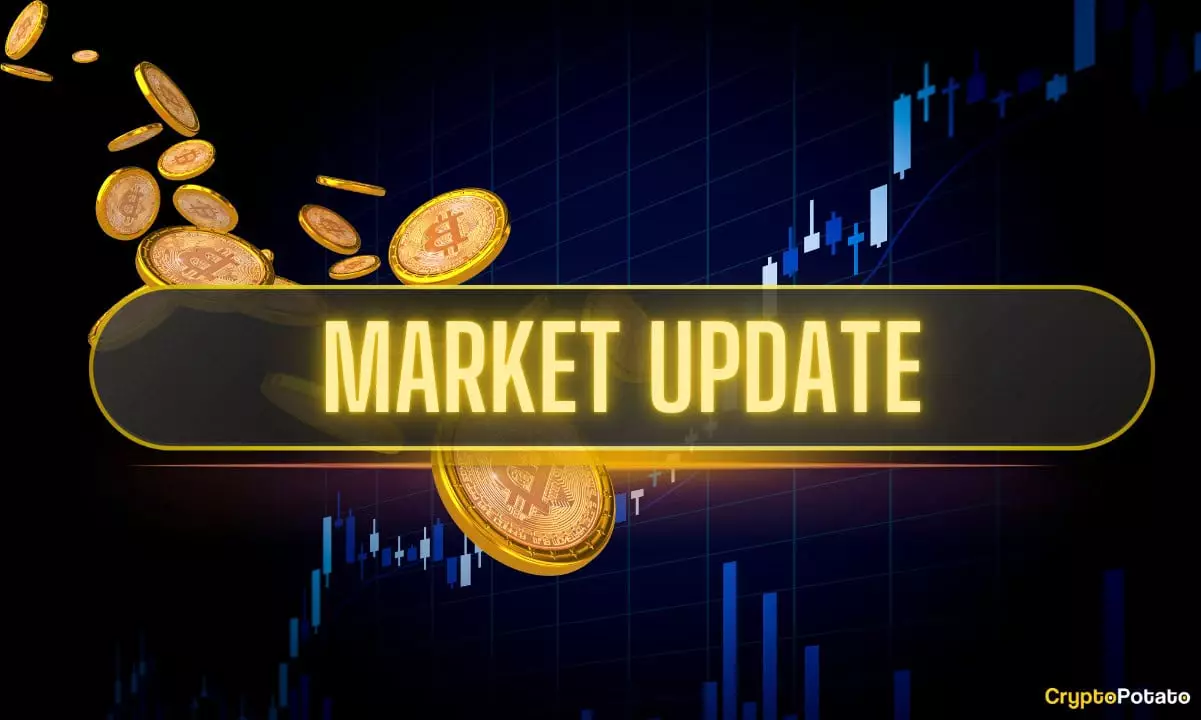In an increasingly interconnected global economy, the repercussions of political maneuvers extend far beyond the borders of any single nation. The recent trade war initiated by U.S. President Donald Trump has sent shockwaves through financial markets, including the notoriously volatile cryptocurrency arena. While Trump’s new tariffs — imposing a minimum tax of 10% on all countries, and escalating rates for key allies — have created a chaotic atmosphere, it’s essential to understand that this environment affects not just traditional commodities but extends unequivocally into the realm of cryptocurrencies.
Bitcoin, often regarded as a safe haven during uncertain times, has witnessed a wild rollercoaster of price volatility in response to these trade policies. The ebb and flow of Bitcoin values, particularly its descent to a five-month low of just over $74,000, illustrates the crypto market’s heightened sensitivity to external economic factors. This is where the notion of Bitcoin as a truly independent asset crumbles; it remains tethered to traditional markets far more than its advocates may wish to admit.
Market Reactions: A Price Rollercoaster
The week in question saw Bitcoin languish in a tight trading range between $82,000 and $84,000, only to plunge dramatically as geopolitical tensions flared. Abrupt shifts in Bitcoin’s valuation, including a swift rebound from under $77,000 to over $83,000, underscore how deeply investor sentiment is influenced by real-world events such as tariff announcements. The erratic nature of these market movements reflects not only the immediate impact of Trump’s policies but also the growing acknowledgment among traders that cryptocurrencies are subject to the same market dynamics as traditional assets.
This past week’s events have illustrated a painful reality for many crypto investors, particularly for those heavily invested in Ethereum. ETH’s staggering loss—down by a remarkable 13% on a weekly scale, hitting lows of $1,400—serves as a vivid reminder that the promises of cryptocurrency’s resilience can falter in the face of external economic pressures. It’s worth considering whether these multidimensional vulnerabilities will question the long-term viability of cryptocurrencies as an investment avenue.
Intriguing Developments Amidst Chaos
Amid the tumult, there are signs of intriguing developments that could signify the market’s ability to rebound. For instance, long-term Bitcoin holders began accumulating in what was reported to be the most substantial inflow into accumulation wallets since 2022 following the tariff upheaval. This fascination with the “HODL” mentality showcases a segment of the market that remains optimistic about the future, despite short-term losses. However, one could argue that this strategy highlights an inherent contradiction within the cryptocurrency ecosystem — the tension between immediate market behavior and long-term prospects remains palpable.
Moreover, events escalating around Ripple’s ongoing legal struggles with the SEC offer a different narrative within the broader crypto environment. Recent motions suggest that a potential settlement between Ripple and the SEC could be on the horizon. A favorable resolution could infuse confidence into the ailing cryptocurrency space, turning sentiment positively — albeit shrouded in uncertainty.
Speculative Predictions That Divide Opinions
Notably, figures like Charles Hoskinson, the co-founder of Cardano, remain optimistic regarding Bitcoin’s trajectory, boldly predicting that it could reach a staggering $250,000 by the end of next year. Such audacious forecasts, while exciting for potential investors, simultaneously provoke skepticism; are these predictions rooted in reality or simply fueled by speculative enthusiasm? The stark disparity between optimistic predictions and the current state reflects a volatile atmosphere driven more by sentiment than solid economic foundations.
Furthermore, experts like Arthur Hayes propose that the next bull run could be ignited either by the U.S. Federal Reserve or China’s People’s Bank of China stepping into the liquid markets. However, such predictions also underline a critical point: if large financial institutions or foreign governments become the primary drivers of cryptocurrency value, the idea of Bitcoin as a decentralized alternative could be severely compromised.
In a world where political decisions directly influence market reactions, especially in highly volatile arenas like cryptocurrencies, one must question the foundational beliefs surrounding digital assets. As cryptocurrencies continue to evolve, their fate remains inextricably linked to external factors, including trade policies and international relations. The interplay between these affecting forces creates a landscape fraught with uncertainty but also ripe with potential for those willing to navigate its complexities. The turbulent road ahead for Bitcoin and its altcoin counterparts poses both challenges and opportunities for investors who dare to engage in this volatile arena.















Leave a Reply